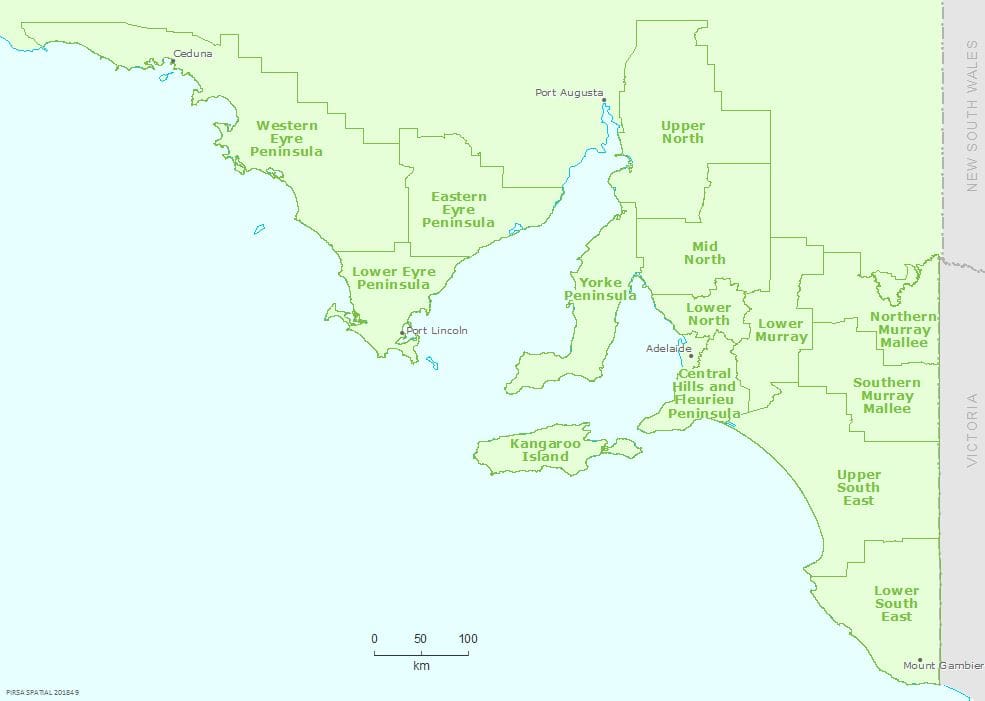
South Australia cropping districts. (Source: PIRSA)
VARIED weather conditions, frosts, high temperatures and mixed rainfall deciles have contributed to South Australian 2017/18 winter crop production falling below the long term average this year, according to the October edition of Primary Industries and Regions SA (PIRSA) Crop and Pasture Report.
PIRSA forecasts the state’s winter crop production at 6.7 million tonnes from an area of 3.5 million hectares, 19pc lower production and 10pc lower area compared with 5-year average.
Against the trend of reducing area, plantings of two crops, lentils and chickpea, have increased from previous year, the latter up by 43pc, though the forecast production increase was only 4pc based on this season’s generally modest yield expectations. Lentil production was similarly affected by lower yield, production was forecast 272,020t, down 39pc from previous year though area was up 9pc.
PIRSA reported pulses in South Australia grew well this season, with low levels of disease, and had average yield potential despite later than ideal emergence in some areas. Most pulse crops on Eyre Peninsula germinated late and grew slowly under cold conditions and have below average yield potential.
Eyre Peninsula suffered
On Eyre Peninsula the late opening rains resulted in considerable reductions in crop area sown compared with previous year. Wheat planted area reduced by more than 25pc, barley by more than 15pc and canola by almost 30pc.
Rainfall for the six months to 31 August on most of Western Eyre Peninsula and parts of Central and Lower Eyre Peninsula was decile 1.
Numerous widespread frosts were recorded with several severe frosts in the last week of August in a number of districts.
Canola
Most canola crops are now in full flower with early ones beginning to pod. Canola crops are highly variable. Early-sown crops that established well have average to above average yield potential but those with staggered germination or mice damage are patchy with well below average yield potential.
Management issues
Septoria tritici blotch is widespread in wheat crops in the Lower North, Yorke Peninsula and Lower South East so many crops have been treated with fungicide to reduce crop damage.
There are low levels of net form of net blotch in barley crops in the Mid and Lower North and Yorke Peninsula but generally disease levels are quite low. A form of spot form of net blotch has become resistant to some fungicides in the Mid North and Yorke Peninsula.
Russian wheat aphids are widespread across most districts of the State. They appear to be in higher numbers on Eyre Peninsula, where they were absent last year. Crops sown with insecticide seed dressing had lower levels of aphids until the last few weeks of August.
Mice are still present and causing damage in isolated patches in wheat and canola crops in a number of districts. Farmers are applying bait to reduce damage.
Snails are present in crops in a number of districts and some baiting is occurring to limit grain contamination and harvest blockages.
Source: PIRSA. Full report here



HAVE YOUR SAY